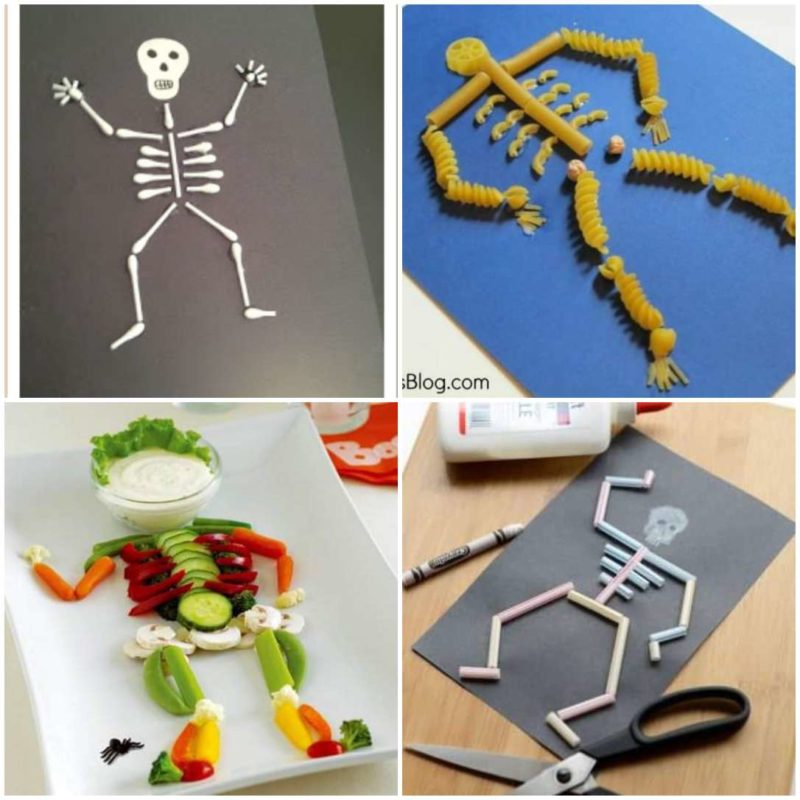
Introducing the Skeleton Craft! Whether you use Q-tips, straws, or pasta, this engaging activity is a fun and easy way for younger kids to discover their bones. As an added bonus, check out this recipe for the “Skeleton & Brain Dip” — not only will you help educate your kids about their skeletal system, but you can also foster an appreciation for vegetables with this fun, edible art!
“Bones shape our bodies and help us stand tall. We have 206. Some are BIG and some are small… There are bones down your back, all in a line. They help you stand up and are known as your spine.” — Inside your Outside, The Cat in the Hat’s Learning Library
Materials
– Q-tips, straws, pasta or other craft items of choice
– Construction paper
– Glue
– Markers, crayons or colored pencils
Optional:
Stickers, glitter, sequins…what ever craft items your little likes to decorate with and you have the patience to oversee 😉
Instructions
– For younger children, prepare ahead of time by roughly drawing the skeleton as an outline for them to follow. You can also cut out the skull for your child and allow them to add a face to it.
– Cut your Q-tips or plastic straws to the desired sizes for each part of your skeleton. If using pasta, place your pasta shapes in a bowl for your child to choose from.
– Get ready to GLUE! It may be helpful to lay out your skeleton on a table first to get a general idea of how it will look once it is glued. Next, add glue and position your pieces on the construction paper. Be as creative as you’d like! Anyway you want to position your “bones” is up to you.
– Allow time to dry.
– Feel free to draw or create a background or “scene” for your skeleton.
– Review the function and/or label the skeleton’s parts with your child.
– Skull – the bones that give your face it’s shape and protects your brain, eyes and teeth.
– Vertebrae – the bones that protect your nerves. The brain tells your nerves what to do.
– Rib cage – bones under your chest that protect your heart and lungs.
– Humerus – the long bone in your upper arm, from your shoulder to your elbow.
– Ulna (little finger side) & Radius (thumb side) – the bones in your lower arm, from you elbow to your wrist. These bones work together so you can move your hand and wrist to wave, build or draw.
– Femur – the long leg bone that runs from your hip to your knee
– Tibia (larger) & Fibula (smaller) – the bones in your lower leg, from your knee to your ankle. These bones work together so you can move your ankle and foot to run, jump and dance.
– Proudly display on your refrigerator!
Special thanks to the following sources for their inspiration!
Kidsactivities.com
Education.com
A Little Artsy, A Little Craftsy
Kraft Heinz My Food & Family

